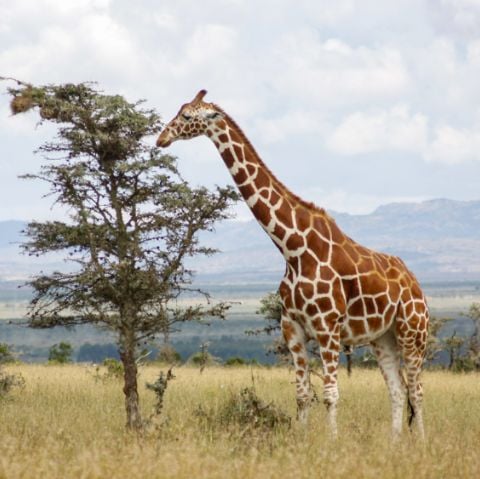Summary of Giraffe Conservation in Kenya:
The Nashville Zoo is actively engaged in global species support and conservation efforts. Their hoofstock keeper, Jenna Wolczyk, recently traveled to Kenya to collaborate with local communities and contribute to conserving wild giraffe populations. During her trip, Jenna worked with Save Giraffes Now (SGN), an organization dedicated to conservation through various projects aimed at rescue, anti-poaching efforts, and fostering coexistence between giraffes and local communities. She participated in research to understand the impact of habitat fragmentation and highway crossings on giraffes and used camera traps to monitor their movement patterns.
In addition, Jenna visited the Ruko Community Wildlife Conservancy, where she observed and learned about the efforts to save and translocate the Rothschild giraffe. The experience highlighted the importance of education and community involvement in conservation efforts.
Upon returning to Nashville Zoo, Jenna aims to implement new enrichment ideas and introduce more browsing options for the giraffes, inspired by her observations of their natural behaviors and habitat in Africa. She also brings back insights into the importance of supporting fieldwork with resources and the interconnectedness of wildlife conservation and community education. The Zoo has financially supported SGN since 2023 and looks forward to continuing this partnership to further giraffe conservation. For more about their conservation efforts, visit Nashville Zoo’s conservation webpage.
– The critical role of local communities in giraffe conservation efforts in Kenya
– Nashville Zoo’s partnership with Save Giraffes Now to bolster giraffe conservation globally
– The impact of habitat fragmentation and human activities on giraffe populations
– Innovative strategies for mitigating human-giraffe conflicts
– Education and awareness as key pillars for successful wildlife conservation
Giraffe conservation in Kenya embodies a complex challenge, intertwining the fate of majestic terrestrial giants with the well-being of local communities and broader ecosystem health. As home to unique subspecies of giraffes, including the Masai and Reticulated giraffes, Kenya’s efforts in conservation have garnered global attention, becoming a beacon of hope and a model for wildlife protection. Such a critical mission demands an integrated approach, leveraging scientific research, community engagement, and international support.
Organizations like Save Giraffes Now (SGN) are at the forefront of these efforts, and they collaborate closely with local conservancies and international partners, including zoos, to align conservation strategies. A vivid example of such collaboration emerges through Nashville Zoo’s and SGN’s partnership. Through financial contributions and hands-on involvement in conservation projects, Nashville Zoo exemplifies how institutions thousands of miles away can positively impact giraffe conservation.
One paramount issue facing Kenya’s giraffes is habitat fragmentation, primarily due to agricultural expansion, infrastructure development, and human settlement growth. These activities reduce the available habitat for giraffes and create barriers that disrupt their migration patterns and genetic flow between populations. Such fragmentation increases the risks of inbreeding and diminishes the giraffes’ ability to navigate their environment for food and mating opportunities, leading to a decline in population vitality.
Local communities stand at the crossroads of this conservation challenge. Their farming and livestock practices bear direct repercussions on giraffe habitats. However, these communities also hold the key to sustainable solutions. Collaborative projects that involve community members in giraffe monitoring and protection, provide educational resources, and create alternative livelihoods have shown promising outcomes. Initiatives that foster coexistence, such as establishing community wildlife conservancies, underscore the intrinsic value of involving local communities in conservation efforts.
Mitigating human-giraffe conflicts, particularly those arising from crop-raiding activities by giraffes, calls for innovative solutions. Deploying early warning systems, constructing non-invasive barriers, and cultivating crops unattractive to giraffes are among the strategies being tested and implemented. Furthermore, understanding giraffe behavior and movement patterns through research, supported by Nashville Zoo’s involvement with SGN, helps design more effective conservation measures. For instance, insights from tracking giraffe migrations can inform infrastructure placement to minimize disruptions to their natural pathways.
Education and public awareness play indispensable roles in conservation success. By fostering a deeper appreciation for giraffes and wildlife among the local and global communities, conservation organizations can build a stronger foundation for their efforts. Nashville Zoo’s commitment to enhancing conservation education, both within and through support for field projects, exemplifies this approach. These educational initiatives aim to inform and inspire action among individuals and communities, cultivating a culture of stewardship for the natural world.
With the support of partners like Nashville Zoo and Save Giraffes Now, Giraffe conservation in Kenya remains a testament to the power of collaboration, innovation, and community engagement in addressing wildlife conservation challenges. Through ongoing research, community-focused projects, and education, there is growing optimism for the future of giraffes in Kenya and beyond. Engaging the global community in conservation efforts is crucial to securing a future for these iconic animals in their natural habitats.

